Health Care In Panama- FAQs
Expats have access to quality public health care. On the other hand, Panama’s private hospitals are among the best and deliver service on par with that of the US or Europe.
Home » Best Countries To Live, Invest, And Retire Overseas » Panama » Health Care In Panama
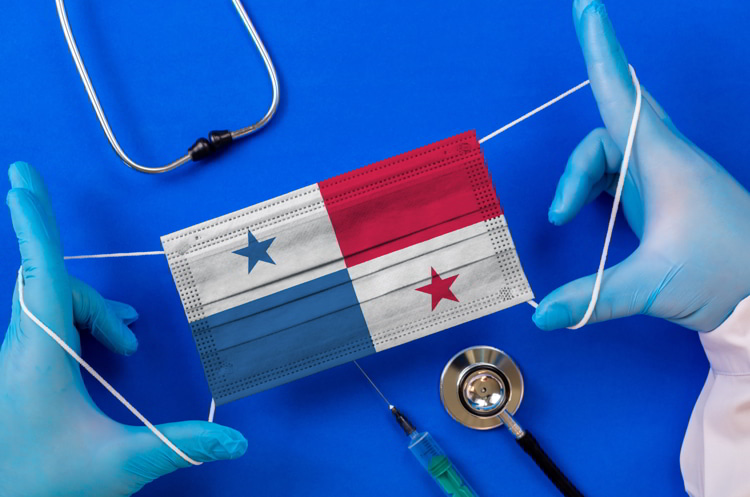
An outdated notion of healthcare in Central America exists where hospital standards are only now emerging from the dark ages. Fortunately, bloodletting and leaches are as foreign to Panamanians as customer service and using car indicators.
The state-run hospitals are basic. However, the standard of health-care provided by private hospitals is some of the best in the world.
Whatever your medical needs you can find the health care treatment you require in Panama.
The prices are hugely competitive and the time and attention spent on you by doctors is a world away from the frantic feel of the U.S.

Kathleen is the Live and Invest Overseas Founding Publisher. She has more than 30 years of hands-on experience traveling, living, and buying property around the world.
We Value Your Privacy! We will not share your email address with anyone else, period.

Health care in Panama can be the equal of anywhere in the world. Combined with bargain prices, medical tourism has become a booming industry here.
Panama City is home to Punta Pacífica Hospital, the only hospital in Latin America affiliated with and managed by Johns Hopkins Medicine International.
Other renowned hospitals can be found in the city, for example, Punta Paitilla Hospital, which is generally less expensive than Punta Pacífica.
Like everything, medical costs are higher in Panama City than elsewhere in the country, but, even in the capital, a doctor’s visit costs US$50 or less.
In Panama City, clinics provide value (US$35 per consultation) and offer excellent, full-service care.
On the other hand, in the interior of the country, medical care is not as reliable or easily available. However, Hospital Chiriqui in Boquete is one of the best and improving rapidly. This is partly due to the high number of expats in the region.
Large towns like Coronado and Pedasí have clinics providing more than adequate care for day-to-day ailments, but for anything major, you’d need to go to Panama City.
It’s safe to say Panama has the best deal for health insurance in the hemisphere.
Many doctors are trained in the U.S., can speak English, and are well-versed in all prescriptions and ailments.
Private health insurance and prescription drugs are readily available and much less expensive than their U.S. equivalents.
American private health insurance policies are accepted in some Panamanian hospitals.
Get Your Free Panama Report Today!
Simply enter your email address below and we'll send you our FREE REPORT - Live And Invest In Panama: The #1 Retirement Haven In The Americas.
Panama has two health care systems—public and private. Panama guarantees health-care facilities for both nationals and foreign visitors who may need them.
The public institutions are run by the Caja de Seguro Social (Social Security System) or the Ministerio de Salud (Ministry of Health).
Working Panamanians receive free health care and prescription medication from hospitals and clinics within the Social Security System. Unemployed Panamanians receive health care through the Ministry of Health.
Most Panamanians with extra money and foreigners usually prefer the private hospitals.
If you can afford it the standard of healthcare you will receive going private is excellent. Waiting times are extremely short (in many cases surgery can be scheduled within a day or 2) and the facilities are superb.
Prices are also far less than in the U.S. with many people reporting their treatment in Panama came in at around 10% of the U.S. cost.
Get Your Free Panama Report Today!
Simply enter your email address below and we’ll send you our FREE REPORT – Live And Invest In Panama: The #1 Retirement Haven In The Americas.
Many people who have treatment in Panama remark on the high standard of workers here.
Doctor’s take time with their patients and never attempt to quickly rush to the next patient.
The downside to the time they spend with each patient is appointments invariably overrun. You can expect your appointment to be at least 30 minutes later than scheduled.
It is not uncommon for Doctor’s to give patients their private mobile number and make themselves available to answer further questions and concerns the patient might have.
Panama has experts in all fields of medicine, many of whom also do shifts at the public hospitals. This enables those who cannot afford to pay for healthcare access to the same standard of healthcare as the wealthy.
Get Your Free Panama Report Today!
Simply enter your email address below and we'll send you our FREE REPORT - Live And Invest In Panama: The #1 Retirement Haven In The Americas.
Dial 911 if you are unable to make it to a hospital and an ambulance will be sent to collect you.
The ambulance service is not big however and they can often take a long time to arrive. This is especially true in Panama City where the heavy traffic plays a big part in long journey times.
Depending on where you live a private ambulance service may be available to you.
Alternative therapies have been popular in Panama for centuries. Today, herbal medicine, indigenous medicine, and traditional medicines and therapies are as prevalent in Panama as modern medicine.
You’ll find many homeopaths, homeopathic pharmacies, acupuncturists, and chiropractors (most of whom are trained in the States). And, massage therapists charge about US$30 for a one-hour house call.
Health insurance in Panama is basically divided into two major types: Local HMOs, which provide coverage only for Panama, and international policies working through an established network of doctors, labs, and hospitals.
In Panama, health insurance is sold by brokers who are not employed by any one company. The broker can explain what each company offers and the various rates of coverage.
You can expect to pay from $50-$200 for private health insurance. The insurance will pay around 70%-90% of your hospital bill and you will pay the rest. Be aware you are expected to pay the bill on immediately on completing your hospital stay.
Another option for insurance is to buy directly from your local hospital.
Get Your Free Panama Report Today!
Simply enter your email address below and we'll send you our FREE REPORT - Live And Invest In Panama: The #1 Retirement Haven In The Americas.
Most pharmacies in Panama (farmacias) are privately owned and generally only those associated with private clinics or public hospitals are open 24 hours.
Some pharmacies are open late at night and many grocery store pharmacies have begun opening 24-hours. Prices for prescriptions drugs are low.
For instance, some drugs requiring a prescription in the U.S. are available over-the-counter in Panama. Plus, it is extremely helpful to know the name of your medicine in Spanish.
Make sure you are up to date with all your regular vaccinations before arriving in Panama. In addition, Hepatitis A, Hepatitis B, Typhoid and Yellow Fever are worth vaccinating against before you visit Panama. There have been isolated outbreaks of cholera and Dengue fever.
It is unlikely you will be exposed to these, especially if you don’t go off the beaten path. You have a small risk of contracting the Zika virus. If you are pregnant you will want to bear this in mind. For everyone else, the Zika virus will only cause a mild fever.
Malaria is not a problem for most of Panama. When the canal was dug a huge program was implemented to kill the malaria mosquitos.
In rural areas near the borders, anti-malaria tablets are worth investing in. You should also follow standard malaria advice and wear insect repellant and long sleeves when in a malaria risk zone.
Get Your Free Panama Report Today!
Simply enter your email address below and we’ll send you our FREE REPORT – Live And Invest In Panama: The #1 Retirement Haven In The Americas.
Make sure you are up to date with all your regular vaccinations before arriving in Panama.
In addition, Hepatitis A, Hepatitis B, Typhoid and Yellow Fever are worth vaccinating against before you visit Panama. There have been isolated outbreaks of cholera and Dengue fever. It is unlikely you will be exposed to these, especially if you don’t go off the beaten path.
You have a small risk of contracting the Zika virus. If you are pregnant you will want to bear this in mind. For everyone else, the Zika virus will only cause a mild fever.
Malaria is not a problem for most of Panama. When the canal was dug a huge program was implemented to kill the malaria mosquitos. In rural areas near the borders, anti-malaria tablets are worth investing in.
You should also follow standard malaria advice and wear insect repellant and long sleeves when in a malaria risk zone.

Dental Care in Panama is amongst the best in the world. Panama City has facilities which are comparable with anywhere in the U.S.
The prices are far less than in the U.S. and the dentists take time with each appointment and are not hurrying to get people through the door.
Most of the dentists throughout Panama speak English and many were trained in the U.S. Outside of Panama City you will still find excellent facilities but not quite as many flourishes.
For example, a dentist in Panama might have flat screen TVs in the operating room for you to watch TV while your teeth are examined.
Dental Tourism, where people visit Panama specifically to make use of the Dental facilities is an increasingly popular industry.
Get Your Free Panama Report Today!
Simply enter your email address below and we'll send you our FREE REPORT - Live And Invest In Panama: The #1 Retirement Haven In The Americas.

Panama is a hot and humid country, especially in the lowlands, take precautions against sunstroke and heatstroke.
Get Your Free Panama Report Today!
Simply enter your email address below and we'll send you our FREE REPORT - Live And Invest In Panama: The #1 Retirement Haven In The Americas.
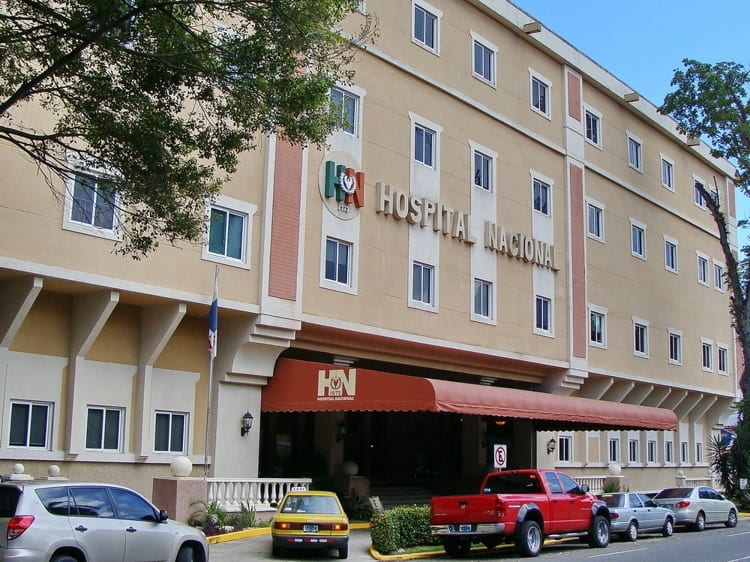
Hospital Nacional accepts international care plans and has a nurse to patient ratio of 1 nurse for every 10 patients. The hospital has an intensive care unit and emergency room.
This is a private hospital with the best facilities in Panama. The hospital has a range of specialists. Popular with both expats and locals. This is one of the most expensive hospitals in Panama. The hospital has links with John Hopkins and lots of the staff here are John Hopkins trained.
Popular with expats as many of the Doctors speak English. The hospital has a specialist cancer treatment ward. A well-equipped and expensive hospital which offers critical care for newborns and adults.
Located near to the Panama Canal, Hospital Santa Fe is one of Panama’s most popular Hospitals for medical tourism. Lots of the doctors trained in the U.S. and provide a similar standard of healthcare.
El Rey provides 24 hour service. Other supermarkets, Super 99, Arrocha, Riba Smith and Metro X also have pharmacy services during their open hours.
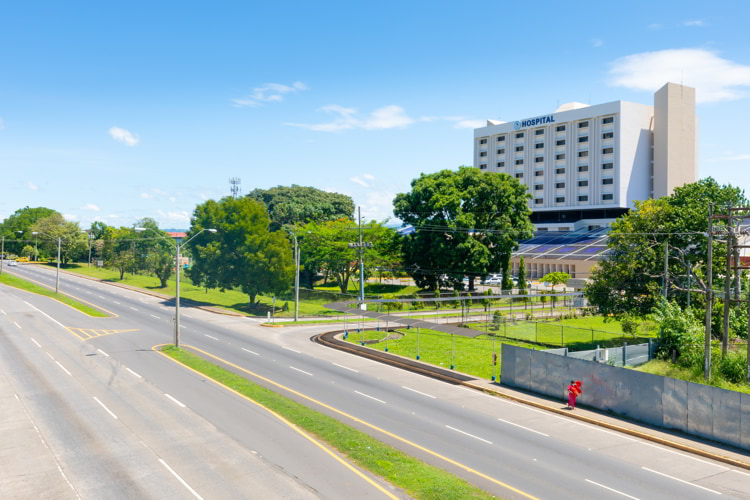
One of the first questions I’m asked when someone is considering Panama as a place to live or invest is: “But what about health care?”
Canadian and U.S. Medicare aren’t honored in Panama. Commercial insurance policies such as Blue Cross and Blue Shield, United, and Humana also aren’t accepted unless it’s within their specialized international group (you wouldn’t have that kind of policy without knowing it). If you’re not otherwise insured, say with a local Panamanian policy, and something happens, it’s generally paid out-of-pocket.
The mention of “out-of-pocket” health care will leave people, especially from the United States, almost paralyzed. There are too many stories about families being financially ruined by one bad diagnosis. When you try to explain, the roar in their heads is too loud.
Every once in a while something happens that paints a clear picture of the reality of health care in Panama. That happened to me recently.
In mid-July, I was enjoying a friend’s visit when she had an accident. She didn’t have insurance in Panama as she was just staying for a few weeks. We were talking and laughing, and in a moment things changed. At the time, it didn’t seem bad. A simple fall, but once she went down, she gained momentum and face-planted, then rolled, on the concrete. I had no idea heads could bleed that much.
We got her into the car—maybe we should have waited for an ambulance—but a doctor walked by and said to get her to an emergency room. How bad could it be? Did she really need an emergency room and stitches? Well, yes, she needed 150 of them.
We were greeted by an efficient group of professionals. Tests revealed a broken nose and a gaping wound on her forehead. The plastic surgeon on call was an artist.
We were at Hospital Punta Pacífica, the most technologically advanced hospital in Latin America and one of two Johns Hopkins International-affiliated facilities in Panama. An interpreter was on hand and within minutes she was receiving treatment.
The initial numbing agents shot directly into the open wound were the most painful part. The plastic surgeon’s talent was obvious in the perfectly executed stitches. When the sutures came out 10 days later, everything was better than normal. “You can thank me for taking away all the lines in your forehead,” he laughed.
The total bill was US$2,200. It would have been US$25 with insurance, but hey, lesson learned. The surgeon deservingly received the bulk of the payment, at US$1,500. Tests, emergency room services, prescriptions, and follow-up accounted for the US$700 balance.
It was impossible to argue with the outcome. She looks better than she did going into the ER. Honestly, I still have a bit of PTSD from the accident, but my friend is all smiles. She expected to pay US$12,250 for the physician alone and planned to call her investment counselor to resolve the hospital balance, which she thought would be thousands more.
How is the health care in Panama? “Great,” I always respond to anyone asking. “It’s also affordable,” I add.
I’m proud to be able to say that full-throated. It would be almost free with insurance honored in Panama… premiums run about US$45 a month.
My friend is getting ready to return to the States and is prepared to have her face inspected by friends who are considering a lift. Before leaving, she’s going to pick up some EpiPens, which sell over the counter in Panama for 70% less than in the States. Same EpiPens, just less expensive.
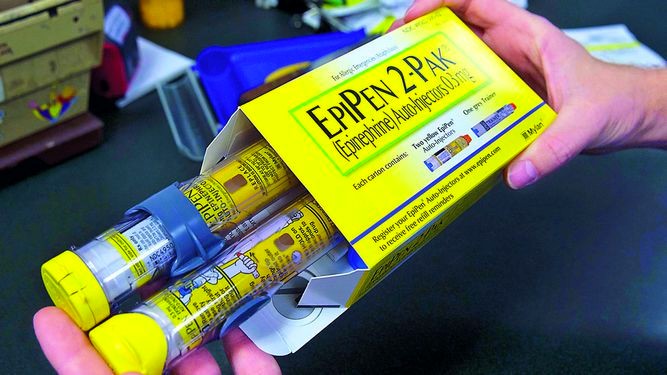
Get Your Free Panama Report Today!
Simply enter your email address below and we'll send you our FREE REPORT - Live And Invest In Panama: The #1 Retirement Haven In The Americas.
Health care is a primary concern for anyone moving overseas.
When it comes to Central America, there’s an outdated notion of healthcare being primitive. Fortunately, bloodletting and leeches are as foreign to Panamanians as customer service and using car indicators.
In Panama, while the state-run hospitals can be basic, the standard of health care provided by private hospitals is some of the best in the world. Plus, many doctors went to school and trained in Canada or the United States and, as a result, speak English.
Whatever your medical needs, you can find the health care treatment you require here. The prices are hugely competitive and the time and attention spent on you by doctors is a world away from the frantic feel of the U.S.
The one drawback to health care in Panama is the lack of options in rural areas, so if you need to be close to top-tier medical facilities, here are your best options in-country…
Chitré is the rapidly developing capital of Herrera Province. Here you’ll find various private and public clinics, and excellent public hospitals all within a few minutes’ drive from downtown.
The two best private clinics are Clínica San Juan Bautista and Clínica Dr. Venancio Villareal.
Two public hospitals offer exceptional care for free (or at a very minimal cost).
Hospital General Cecilio A. Castillero is a general hospital providing cost-free care for all patients. Hospital Gustavo Nelson Collado provides free care to residents and citizens with Panamanian Social Security. Without Social Security, the cost is US$15 per day and US$1 for a consult. It also has an ICU.
Hospital Regional de Azuero, in La Villa de Los Santos, is a public hospital and has an agreement with Johns Hopkins. It specializes in heart attacks and heart disease, and all treatment is 100% free, with or without insurance. The doctors are excellent, and some speak English.
You have several options for dentistry and orthodontics, including Clínica DentiAzuero, Clínica de Odontologia José Villalaz, and Clínica Dental Cambara Calderon.
Optometrists, physical therapists, and massage therapists are also available.
San Francisco is Panama’s best option for living a quiet, residential, urban lifestyle. This is a rapidly growing middle-, upper-middle, and upper-class neighborhood with a mix of homes and high-rise apartments.
Panama’s two finest private hospitals are in the corregimiento of San Francisco.
Hospital Punta Pacífica is affiliated with Johns Hopkins Hospital in the States and offers outstanding care in the areas of urology, cardiology, orthopedics, physical therapy, gynecology and obstetrics, nephrology, endocrinology, and more.
Hospital Paitilla is another world-class medical institution with cardiology, plastic surgery, dermatology, endocrinology, speech therapy, gastroenterology, geriatrics, gynecology and obstetrics, and many other departments.
Both facilities also offer internal medicine, general surgery, and specialized surgery, like brain and heart operations. For any health concern you have, you’ll be in good hands at either Hospital Punta Pacífica or Hospital Paitilla. They boast cutting-edge technology and English-speaking doctors.
Hospital Punta Pacífica consistently ranks as one of Latin America’s best health care facilities.
There are many private clinics throughout San Francisco with general and specialty doctors. If you’re looking for a chiropractor, physical therapist, allergist, dentist, orthodontist, fertility specialist, mental health expert, or another practitioner, you won’t need to leave San Francisco to get the care you need.
If you need prescription medication, there are pharmacies throughout the neighborhood.
San Francisco offers health care for all ages and all medical needs.
Overall, the cost of medical care in Panama is cheap. Like everything, medical costs are higher in Panama City than elsewhere in the country, but, even in the capital, a doctor’s visit costs US$50 or less. In Panama City, clinics provide value (US$30 per consultation) and offer excellent, full-service care.
Panama has two health care systems—public and private. Panama guarantees health care facilities for both nationals and foreign visitors who may need them.
The public institutions are run by the Caja de Seguro Social (Social Security System) or the Ministerio de Salud (Ministry of Health). Working Panamanians receive free health care and prescription medication from hospitals and clinics within the Social Security System. Unemployed Panamanians receive health care through the Ministry of Health. Most Panamanians with extra money and foreigners usually prefer the private hospitals.
If you can afford it, the standard of healthcare you will receive going private is excellent. Waiting times are extremely short (in many cases surgery can be scheduled within a day or two) and the facilities are superb. Prices are also far less than in the U.S. with many people reporting their treatment in Panama came in at around 10% of the U.S. cost.

Kathleen is the Live and Invest Overseas Founding Publisher. She has more than 30 years of hands-on experience traveling, living, and buying property around the world.
We Value Your Privacy! We will not share your email address with anyone else, period.
Expats have access to quality public health care. On the other hand, Panama’s private hospitals are among the best and deliver service on par with that of the US or Europe.
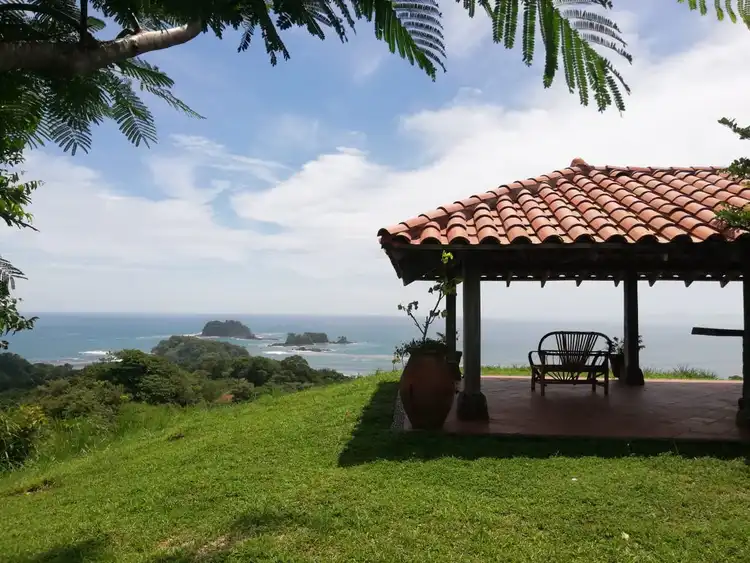 . '
. '
 . '
. '
 . '
. '
 . '
. '
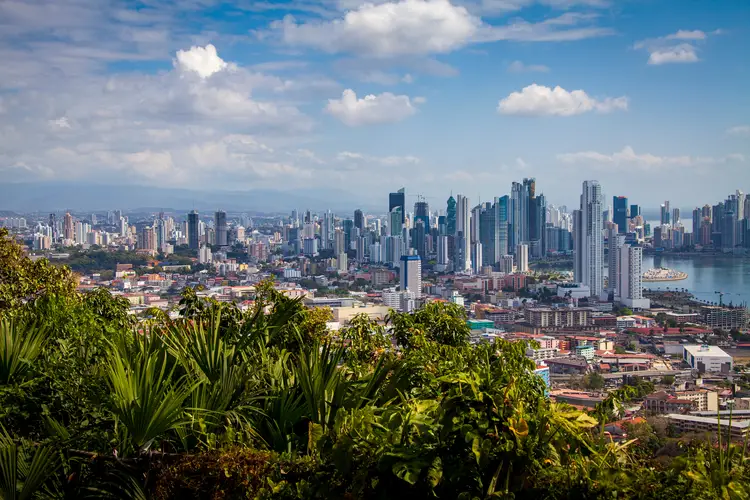 . '
. '


Sign up to receive the FREE daily e-letter, Overseas Opportunity Letter and we’ll immediately email you our editors’ latest research report…
BEST PLACES TO RETIRE
FREE REPORT:
Sign up for FREE and learn how to live the good life on a modest budget, find bargain property, and more. Plus, check out our free report on the 10 BEST PLACES TO RETIRE.
RETIRE OVERSEAS AND LIVE LIKE ROYALTY
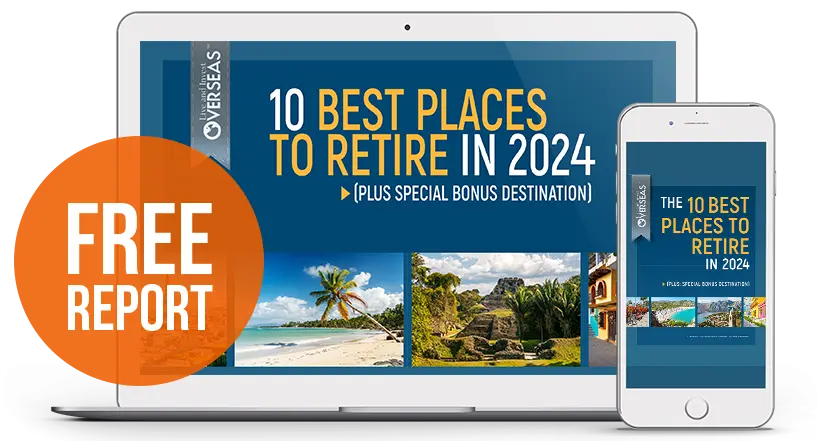
© 2008 - Live and Invest Overseas - All Rights Reserved.